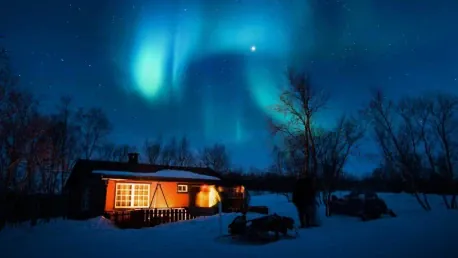Utilities face many challenges in managing electricity demand. Winter demand response (DR) programs play a crucial role in maintaining grid stability and ensuring customer comfort. DR is a widely used resource in the utility industry, as utilities across the country and world have leveraged different technologies and strategies for decades to adjust electricity consumption during peak demand periods to alleviate strain on the grid. Standard DR approaches have been effective in reducing peak demand in summer months. However, the need for specialized winter DR has become increasingly apparent as regions experience more frequent and extreme winter weather events, as well as increasing rates of electrification.
For most utilities in the U.S., demand peaks have shown up in the summer months on the hottest days of the year due to air conditioning usage. Yet recent trends indicate that winter peaks will soon rival or even surpass current summer peaks due to the adoption of heat pumps. Some regions within the U.S. are already facing higher peaks in winter rather than in summer due to a high prevalence of electric heating.
1. Careful Program Planning
Unlike summer peaks, which tend to occur between late afternoon and early evening, winter peaks tend to occur twice a day—during early mornings when people wake up and again during late evenings when temperatures drop. Managing these high-demand periods is essential for preventing grid instability and ensuring that utilities maintain both reliable and affordable services to customers. By implementing a winter DR program, utilities can effectively shift energy usage away from critical hours, thereby reducing strain on the grid. By strategically managing load, utilities can use winter DR programs to address constraints at both the bulk power system and distribution system levels.
Careful program planning involves selecting appropriate Original Equipment Manufacturers (OEMs), distributed energy resource (DER) technology, and DER management system (DERMS) provider to meet program objectives. Utilities need to choose partners that align with their goals and have the technology required for effective DR programs. This thoughtful selection is crucial for achieving the desired outcomes from winter DR initiatives and ensuring program success.
2. Winter Heating Verification
Winter heating verification is key for smart thermostat programs. Identifying and recruiting customers who use advanced metering infrastructure (AMI), billing, program participation, and telemetry data with electric heat is essential. For all winter DR programs, understanding the value customers and their DER technology bring to load reduction goals is imperative. This ensures that the program targets the right participants and utilizes their technology effectively to achieve load reductions.
For smart thermostat programs, utilities need to verify that enrolled customers have compatible systems. These systems should control not just the main heating elements but also any auxiliary or backup heating systems, which can be either electric or gas-powered. Smart thermostats can connect to electric baseboard heating as well, broadening the scope of participants. Ensuring accurate data and proper customer segmentation helps utilities manage loads effectively while providing a better customer experience.
3. Strategic Event Scheduling
Strategic event scheduling is critical for the success of winter DR programs. Defining the purpose of the event, creating effective customer communication, and assessing the impact are essential steps. Customers usually receive advance notice about upcoming events—typically a day before—with events usually called in the early morning or evening. Effective communication ensures that customers are aware and prepared, helping to prevent discomfort and ensure participation.
Managing customer discomfort, particularly during early morning DR events, is a challenge that requires shorter duration events and smaller temperature adjustments compared to typical summer DR events. Without the proper implementation, a winter DR program may lead to unintended consequences, such as increasing customers’ energy usage and bills. High temperature differences between setpoints and actual temperatures post-event may trigger backup or auxiliary systems (e.g., gas or electric resistance heating), thus inadvertently causing additional peaks or higher gas usage.
4. Comfort-Based Dispatching
Comfort-based dispatching tailors temperature changes for different customer segments while adjusting load discreetly to enhance customer comfort. Each customer has unique thresholds for uncomfortable temperatures, making it essential to customize responses according to specific comfort levels. Balancing load reduction with customer comfort is crucial, as winter DR programs must address individual thresholds for temperature changes to avoid high opt-out rates.
Unexpected responses from customers, such as resetting temperatures or overcompensating for perceived drops, can lead to inefficiencies in DR programs. Understanding thermal dynamics and profiling customer behavior helps in dispatch adjustments, ensuring load invisibility while enhancing customer experience. Programs that recognize individual needs do better in overall retention and performance metrics. Tailoring approaches to distinct customer segments allows utilities to optimize participation and satisfaction.
5. Post-Event Adjustment
Utilities face significant challenges in managing electricity demand, particularly during extreme weather events. Winter demand response (DR) programs are critical for maintaining grid stability and ensuring customer comfort. These programs allow utilities to adjust electricity consumption during peak demand periods, thereby reducing strain on the grid. While traditional DR methods have effectively managed summer peaks, the need for specialized winter DR is becoming increasingly important due to more frequent and severe winter weather and higher rates of electrification.
Historically, peak demand in the U.S. has occurred during the hottest summer days, when air conditioning usage is at its highest. However, recent trends suggest that winter peaks may soon rival or even surpass summer peaks, primarily due to the growing use of heat pumps. In some regions of the U.S., winter demand has already overtaken summer demand because of the widespread adoption of electric heating. As such, utilities must adapt their strategies to manage the shifting demand patterns effectively.









